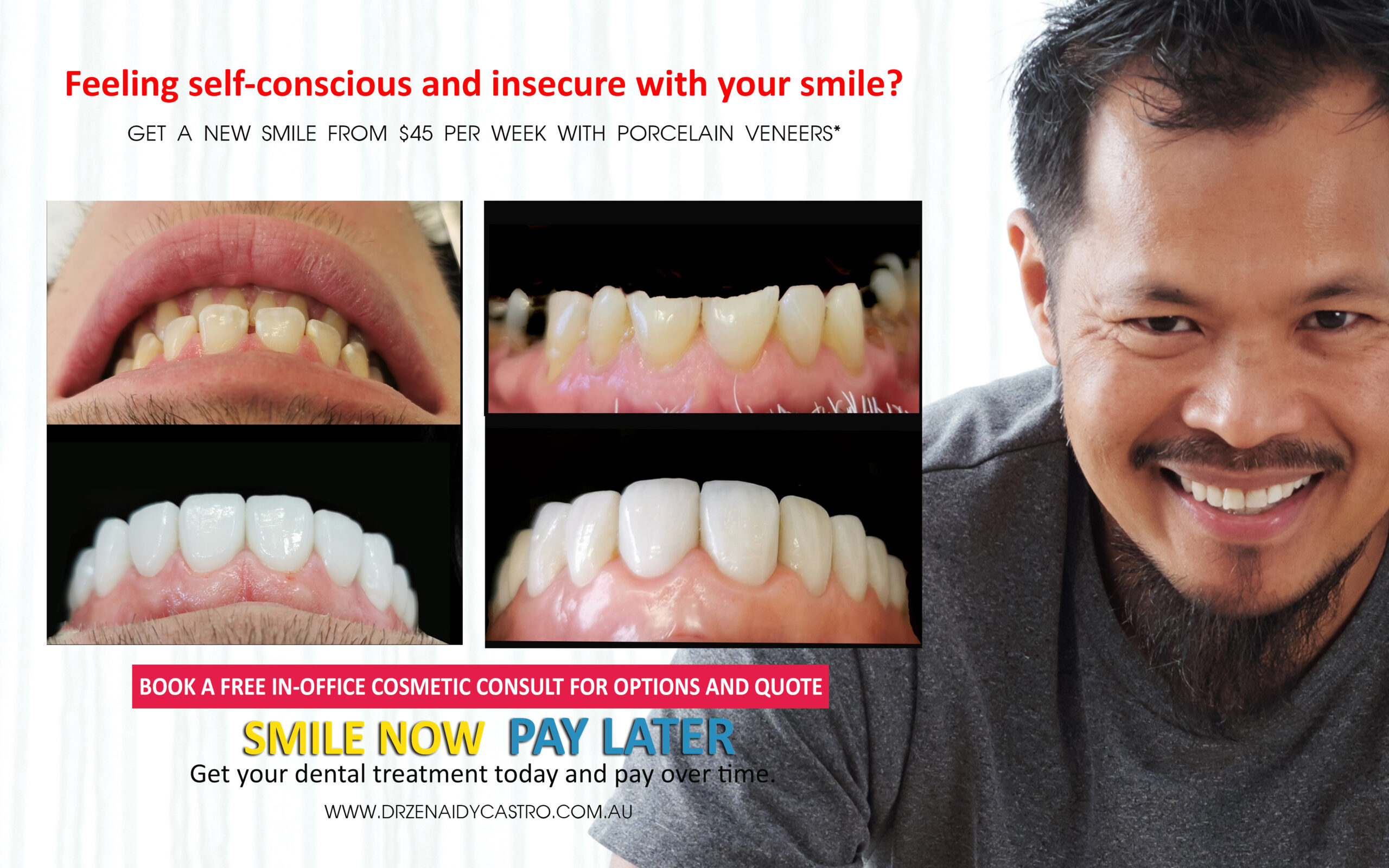

Key Highlights: The Art of Smart Dental Price Shopping Over the Phone
- Phone quotes are marketing tools, not accurate estimates – Initial quotes are designed to get you in the door rather than reflect actual treatment costs.
- Receptionists lack clinical knowledge – Front desk staff typically can’t assess procedure complexity or individual case variables that affect pricing.
- Expect 25-50% higher costs than phone quotes – Budget for significant increases once you’re examined and “complications” are discovered.
- “Starting at” means it will cost more – Qualifying language like “as low as” or “around” indicates best-case pricing that rarely applies.
- The consultation upsell is standard practice – Low phone quotes convert to comprehensive treatment plans with multiple expensive procedures.
- Ask for ranges, not single numbers – Request pricing ranges and ask what percentage of cases fall at the high end vs. low end.
- Material upgrades are common profit centers – Basic procedures suddenly require “premium” materials for your “unique situation.”
- Document every phone conversation – Keep detailed records of quotes, staff names, dates, and specific procedures discussed.
- Speak to treatment coordinators, not just receptionists – Clinical staff can provide more realistic estimates based on actual procedure complexity.
- Red flag: Quotes 30%+ lower than competitors – Dramatically low prices often indicate bait-and-switch tactics or hidden costs.
- Ask about their policy when costs exceed estimates – Understand upfront how offices handle significant price increases after examination.
- Insurance coverage estimates are often wrong – Receptionists rarely understand complex insurance scenarios or actual out-of-pocket costs.
- Request written confirmation when possible – Get quotes via email or written estimates to hold offices accountable.
- Probe for complexity factors – Ask what could make your case more expensive than the base quote they’re providing.
- Beware of urgency creation tactics – Pressure to book immediately or claims that delays will cause expensive complications.
- Call 5-7 offices for major procedures – Get sufficient data points to understand realistic pricing ranges in your area.
- Separate diagnostic costs from treatment costs – Consultation fees, X-rays, and treatment planning often involve additional charges.
- Trust your instincts about communication quality – Offices that are evasive or unprofessional on the phone often provide poor treatment experiences.
- Get second opinions for major cost increases – If examination costs significantly exceed phone quotes, seek independent verification.
- Quality matters more than lowest price – Use phone shopping to find fair pricing from reputable providers, not just the cheapest option available.
Introduction: The Phone Quote Reality Check
Dental price shopping has become an essential skill for modern patients seeking affordable care, requiring savvy consumers to master dental cost comparison techniques that go beyond simple phone calls. Understanding dental phone quotes and their inherent limitations is crucial, as dental estimate accuracy often depends on factors that receptionists cannot assess over the phone. Many patients fall victim to common dental receptionist tactics designed to secure appointments rather than provide realistic pricing information, highlighting the urgent need for improved dental pricing transparency across the industry. Effective dental cost planning requires patients to budget for potential increases beyond initial estimates, making dental quote verification an essential step in the treatment planning process. Smart consumers must factor in dental consultation costs as part of their overall healthcare budget, while developing sophisticated strategies to navigate the complex world of dental treatment pricing that varies dramatically between providers and procedures. Learn more below
In today’s healthcare landscape, dental costs can be among the most shocking expenses families face. Unlike medical procedures that are often covered by comprehensive insurance, dental work frequently requires significant out-of-pocket expenses. This financial reality has created a new breed of savvy dental consumers who understand the importance of shopping around for the best value. However, the art of dental price shopping over the phone is fraught with pitfalls, misleading information, and tactics designed to get you in the door rather than provide accurate pricing.
The uncomfortable truth about dental phone quotes is that they’re often more marketing tool than genuine estimate. Most dental offices have perfected the art of the low-ball phone quote, designed specifically to secure your appointment. The person answering your call—typically a receptionist or front desk coordinator—rarely has the clinical knowledge necessary to provide accurate estimates for your specific situation. They’re working from basic fee schedules, quoting best-case scenarios, and often have little understanding of the complexity that individual cases can present.
This disconnect between phone quotes and actual treatment costs has become so prevalent that many patients experience what can only be described as “sticker shock” when they arrive for their consultation. The crown that was quoted at $800 over the phone suddenly becomes $1,400 after the examination. The “simple” extraction turns into a complex surgical procedure requiring bone grafting. The routine filling becomes a root canal and crown. These scenarios play out in dental offices across the country every single day, leaving patients feeling misled and financially unprepared.
Understanding this reality doesn’t mean you should abandon phone shopping altogether. Instead, it means approaching the process with realistic expectations and sophisticated strategies that account for the inherent limitations and biases in the information you’ll receive. The key is learning to read between the lines, ask the right questions, and protect yourself from the common traps that turn low phone quotes into high dental bills.
The Receptionist Factor: What They Know vs. What They Don’t
To become an effective dental phone shopper, you must first understand the limitations of the person providing your quotes. In most dental offices, the phone is answered by administrative staff whose primary qualifications relate to scheduling, insurance processing, and basic customer service. While these individuals may be excellent at their core responsibilities, they typically lack the clinical training necessary to assess the complexity of dental procedures or understand the variables that can significantly impact treatment costs.
The average dental receptionist receives minimal training about clinical procedures beyond basic terminology and fee schedules. They can tell you that a crown costs $1,200 according to their fee schedule, but they cannot assess whether your particular crown will require additional procedures, specialized materials, or extended treatment time. They know the base price for a root canal, but they have no way of determining whether your case will be straightforward or complicated by factors like calcified canals, unusual anatomy, or the need for retreatment.
This knowledge gap creates a systematic bias toward underestimating costs during phone consultations. When faced with uncertainty about procedure complexity, receptionists almost invariably default to quoting the simplest, least expensive scenario. This isn’t necessarily malicious—it’s often the only information they have access to. However, the result is that patients consistently receive quotes that represent best-case scenarios rather than realistic expectations for their specific situations.
Front desk staff are also typically trained to focus on appointment conversion rather than accurate cost estimation. Their success is often measured by how many new patient appointments they can schedule, not by how accurately they predict treatment costs. This creates an inherent incentive to provide attractive quotes that encourage patients to book consultations, even if those quotes are unlikely to reflect the actual treatment costs.
The limitation extends beyond clinical knowledge to insurance understanding. While receptionists can look up basic coverage information, they rarely have the expertise to navigate complex insurance scenarios, understand the nuances of different plan types, or accurately predict out-of-pocket costs. They might tell you that your insurance covers 80% of crowns, but they can’t account for annual maximums, waiting periods, alternative benefit clauses, or the difference between what insurance allows and what the office charges.
Common Receptionist Tactics
Understanding the common tactics used by dental office staff can help you navigate phone conversations more effectively and ask better questions. These tactics aren’t necessarily deceptive—they’re often standard practices that have evolved to maximize appointment bookings while minimizing the time spent on each phone call.
One of the most prevalent tactics is the use of qualifying language that provides built-in escape routes for price increases. Phrases like “starting at,” “as low as,” “typically around,” and “in the range of” are carefully chosen to suggest a price point while providing flexibility for increases later. When a receptionist says a procedure “starts at $800,” they’re technically not promising that you’ll pay $800, but most patients hear it as a quote for their specific case.
Another common approach is the complexity deflection, where receptionists acknowledge that final costs depend on individual circumstances but still provide a specific number that anchors expectations. They might say, “Every case is different, but crowns are usually around $1,000,” which gives the impression of personalized attention while still delivering a quote that may be completely unrealistic for your situation.
The consultation prerequisite is perhaps the most sophisticated tactic, where offices insist that accurate quotes require an in-person examination while simultaneously providing a “ballpark estimate” over the phone. This approach serves multiple purposes: it gets you to commit to an appointment, it provides legal cover for quote changes, and it still gives you a number to think about. The problem is that these “ballpark estimates” are often wildly inaccurate, but they’ve served their purpose by getting you in the door.
Many offices also employ the insurance optimization promise, where they assure callers that they’ll “work with your insurance to maximize your benefits” or “help you get the most coverage possible.” While this sounds helpful, it often means that the office will find ways to justify additional procedures or upgrades that may not be necessary but are more likely to be covered by insurance.
The urgency creation tactic involves suggesting that delaying treatment could lead to more expensive problems down the road. While this is sometimes clinically accurate, it’s also a powerful tool for encouraging immediate appointment booking and reducing the likelihood that patients will continue shopping around for better prices.
Why Phone Quotes Are Often Misleading
The structural reasons why phone quotes tend to be inaccurate go beyond individual office tactics to systemic issues in how dental pricing works. Unlike many medical procedures that have standardized protocols and predictable outcomes, dental procedures are highly variable and dependent on individual anatomical factors, existing dental work, and patient-specific complications.
Consider a seemingly simple procedure like a filling. The phone quote might be based on a small, easily accessible cavity in a front tooth. However, your actual situation might involve a large cavity near the nerve in a back molar, requiring specialized materials, multiple appointments, and potentially a crown instead of a filling if the decay is more extensive than initially apparent. The receptionist has no way of knowing these details over the phone, but the cost difference could be enormous.
The consultation upsell strategy has become increasingly sophisticated as offices recognize the revenue potential in converting phone shoppers into comprehensive treatment patients. The initial low quote serves as a loss leader, designed to get you into the chair where the real sales process begins. Once you’re physically present, having taken time off work and arranged childcare, you’re psychologically invested in moving forward with treatment, even if the costs have increased significantly.
This strategy is particularly effective because dental problems rarely exist in isolation. The examination that was supposed to provide a quote for one crown often “discovers” additional issues that need attention. Suddenly, you’re looking at a comprehensive treatment plan that addresses problems you didn’t know you had, using procedures you’ve never heard of, at costs that bear no resemblance to your original phone inquiry.
The technology factor adds another layer of complexity to phone quotes. Modern dentistry offers multiple material choices and treatment approaches for most procedures, each with different cost implications. A crown could be made from basic porcelain, high-end ceramic, or precious metal, with costs varying by hundreds of dollars. Implants can be traditional titanium or newer zirconia, placed using conventional techniques or guided surgery, with or without bone grafting. These variables are impossible to assess over the phone, but they dramatically impact final costs.
Insurance complications represent another major source of quote inaccuracy. Dental insurance is notoriously complex, with benefits that vary not just between plans but between specific procedures, timing of treatment, and provider networks. What appears to be a straightforward covered procedure over the phone often turns out to have waiting periods, annual maximum limitations, or alternative benefit clauses that significantly reduce coverage.
Decoding Receptionist Language
Learning to interpret the specific language used by dental office staff can help you extract more useful information from phone conversations and better predict actual treatment costs. Certain phrases and approaches are so common that they’ve become industry standards, and understanding their true meaning can help you ask better follow-up questions.
When you hear “starting at” or “as low as,” immediately ask about the circumstances that would result in higher costs. What percentage of cases end up costing more than the base price? What are the most common reasons for cost increases? This forces the receptionist to acknowledge that their quote represents the best-case scenario rather than a realistic expectation for your situation.
The phrase “it depends on your case” is often followed by a specific number, which creates a contradiction that you should address directly. If the cost truly depends on individual factors, how can they provide a quote without examining you? Ask them to explain what factors might make your case more or less expensive than their quoted price.
“The doctor will need to see you first” is perhaps the most honest statement you’ll hear, but it’s often preceded or followed by a specific quote anyway. When you hear this, ask why they’re providing a number if the doctor’s examination is required for accuracy. Request a range rather than a single figure, and ask about their policy when actual costs exceed phone estimates.
“Most insurance plans cover this procedure” is a meaningless statement without specifics about your plan, your remaining benefits, and the office’s fee structure relative to insurance allowances. Ask about the office’s specific experience with your insurance company and request estimates based on your actual plan details rather than general statements about coverage.
The term “ballpark estimate” has become code for “this number has no relationship to what you’ll actually pay, but it sounds official enough to get you to make an appointment.” When you hear this phrase, ask for the boundaries of the ballpark. What’s the lowest possible cost? What’s the highest? What factors determine where within that range your case might fall?
Smart Phone Shopping Strategies
Developing effective phone shopping strategies requires understanding both the limitations of the information you’ll receive and the techniques that can help you extract more useful data from your conversations. The goal isn’t necessarily to get exact quotes—that’s often impossible—but to gather enough information to make meaningful comparisons and budget appropriately for your dental care.
Start by preparing thoroughly before making any calls. Gather as much specific information as possible about your needed procedures, including X-rays if you have them, detailed descriptions of your dental history, and any complications that previous dentists have mentioned. The more specific information you can provide, the more accurate the estimates you’ll receive.
When calling offices, ask to speak with someone who has clinical knowledge rather than just the person who answers the phone. Treatment coordinators, office managers, or dental assistants often have better understanding of procedure complexities and can provide more realistic estimates. If you’re told that only the receptionist can provide quotes, consider that a red flag about the office’s commitment to transparency.
Frame your questions to elicit information about variables rather than just base prices. Instead of asking “How much does a crown cost?” ask “What factors affect the cost of crowns in your office?” This approach often reveals important information about material choices, laboratory fees, additional procedures, and other cost variables that a simple price quote wouldn’t include.
Request ranges rather than single numbers, and ask about the distribution within those ranges. If they quote $800-1200 for a procedure, ask what percentage of cases fall at the low end versus the high end. This gives you a better sense of realistic expectations for your situation.
Ask about the office’s policy when actual costs exceed phone estimates. Do they honor their quotes? Do they require approval for cost increases? Do they provide detailed explanations for changes? Offices with transparent practices will have clear policies about handling quote discrepancies.
Inquire about consultation fees and what they include. Some offices provide free consultations but charge for X-rays. Others include basic imaging but charge for advanced diagnostics. Understanding these upfront costs helps you budget for the shopping process itself and provides insight into the office’s pricing philosophy.
Getting More Realistic Estimates
The key to obtaining more realistic phone estimates lies in asking questions that force office staff to consider the complexity variables that affect your specific case. Rather than accepting a simple quote, probe for information about what could make your situation more expensive than the base price.
Ask about their experience with cases similar to yours. If you need a crown on a previously root-canaled tooth, ask specifically about that scenario rather than accepting a general crown quote. If you have a history of difficult extractions, mention that upfront and ask how it might affect pricing. The more specific your questions, the more thoughtful and accurate the responses tend to be.
Request information about their most common additional procedures and costs. Many dental treatments have predictable companion procedures that offices routinely recommend. Crowns often require buildups. Root canals frequently need crowns. Extractions sometimes require bone grafting. By asking about these possibilities upfront, you can get a more complete picture of potential costs.
Ask about material choices and their cost implications. Most dental procedures offer multiple options with different price points. Understanding these choices helps you make informed decisions and budget appropriately. Don’t let offices default to their most expensive options without explaining the alternatives.
Inquire about the office’s average case complexity. Some practices specialize in complex cases and may quote higher prices because they’re used to dealing with difficult situations. Others focus on routine work and may underestimate complexity. Understanding the practice’s typical patient profile helps contextualize their quotes.
Request references to their fee schedule or written estimates when possible. While many offices won’t provide detailed fee schedules over the phone, some will email basic pricing information or provide written estimates after initial conversations. This documentation can be valuable for comparison shopping and holding offices accountable for their quotes.
Protecting Yourself from Quote Inflation
Quote inflation—the phenomenon where actual treatment costs significantly exceed phone estimates—is so common in dentistry that protecting yourself requires systematic strategies and careful documentation. The goal is to minimize surprises and maintain some control over the cost escalation process.
Document everything during your phone conversations. Keep detailed records of who you spoke with, when you called, what procedures were discussed, and what quotes were provided. Include any qualifications or conditions that were mentioned. This documentation becomes crucial if you need to reference original quotes during later conversations.
Get commitments in writing whenever possible. While many offices won’t provide binding quotes over the phone, some will email estimates or provide written ranges. Even informal email confirmations of phone conversations can provide valuable documentation of original discussions.
Establish clear expectations about cost changes before scheduling consultations. Ask about the office’s policy when examination reveals that costs will exceed phone estimates. Will they provide detailed explanations? Will they offer alternatives? Can you decline additional procedures? Understanding these policies helps you maintain control during the consultation process.
Ask about diagnostic fees and what they include. Some offices charge consultation fees that are applied toward treatment costs, while others charge separate fees for examinations, X-rays, and treatment planning. Understanding these upfront costs helps you budget for the shopping process and avoid surprise charges for getting accurate quotes.
Request itemized treatment plans rather than package pricing. When offices provide comprehensive treatment plans, ask for individual procedure costs rather than bundled pricing. This transparency helps you understand what you’re paying for and makes it easier to get second opinions or modify treatment plans.
Set spending limits before consultations and communicate them clearly. If you’ve budgeted $1,500 for a procedure based on phone quotes, let the office know your budget constraints upfront. This information can influence treatment planning and helps prevent situations where you feel pressured to commit to expensive treatments on the spot.
The Consultation Conversion Playbook
Understanding how dental offices convert phone shoppers into treatment patients can help you maintain control during consultations and avoid unnecessary procedures or inflated costs. The conversion process often follows predictable patterns that you can recognize and respond to appropriately.
The comprehensive examination is often the first step in the conversion process. What was supposed to be a simple consultation for one procedure becomes an extensive evaluation that “discovers” multiple additional problems. While some offices genuinely provide thorough care, others use comprehensive exams as opportunities to identify revenue-generating treatments that weren’t part of your original inquiry.
Material upgrades represent another common conversion tactic. The basic crown that was quoted over the phone becomes inadequate for your “unique situation,” requiring premium materials for optimal results. While material quality does matter, be wary of offices that present upgrades as necessities rather than options with different cost-benefit profiles.
The prevention upsell involves recommending additional procedures to prevent future problems. While preventive care is important, be cautious about offices that suddenly recommend extensive preventive treatments that weren’t discussed during your phone conversation. These recommendations should be clearly explained and optional rather than presented as requirements.
Timing pressure is a powerful conversion tool, where offices suggest that delaying treatment will result in more expensive problems. While this is sometimes clinically accurate, it’s also used to prevent patients from seeking second opinions or continuing to shop for better prices. Most dental problems don’t require immediate treatment, and you should feel comfortable taking time to consider your options.
The insurance maximization pitch involves restructuring treatment plans to optimize insurance benefits, often by spreading procedures across multiple years or recommending covered alternatives to uncovered treatments. While this can be legitimate financial planning, it can also result in more extensive treatment than originally needed.
Your Defense Strategy
Developing effective defense strategies for dental consultations helps you maintain control over treatment decisions and costs while still receiving appropriate care. The key is preparation, clear communication, and willingness to slow down the decision-making process when necessary.
Bring your phone quotes and refer to them immediately when costs are discussed. Don’t let offices ignore or dismiss their original estimates without detailed explanations. Ask specific questions about why costs have changed and request itemized breakdowns of new charges.
Insist on seeing diagnostic evidence for any additional treatments that weren’t part of your original inquiry. If the examination reveals new problems, ask to see X-rays, photos, or other documentation that supports the recommendations. Legitimate additional treatments should be clearly visible and well-explained.
Request time to consider comprehensive treatment plans rather than making decisions during consultations. Most dental problems don’t require immediate treatment, and you should feel comfortable taking plans home to review, research, and potentially get second opinions.
Ask about alternative treatment approaches and their cost implications. Most dental problems can be addressed in multiple ways, and you should understand your options rather than feeling pressured into the most expensive solution.
Clarify what’s included in quoted prices and what costs extra. Ask about follow-up appointments, adjustments, warranties, and potential complications. Understanding the full scope of costs helps you make informed decisions and avoid surprise charges.
Set clear boundaries about additional procedures and communicate them explicitly. If you’re only interested in addressing your original concern, make that clear and ask that other issues be discussed separately. You can always schedule additional treatments later if you choose to do so.
Red Flags During Phone Shopping
Recognizing red flags during phone shopping can help you identify offices that may not provide transparent pricing or quality care. While no single red flag necessarily disqualifies an office, multiple warning signs suggest you should look elsewhere for treatment.
Quotes that are significantly lower than other offices (by 30% or more) without clear explanations deserve scrutiny. While some offices do offer competitive pricing, dramatic differences often indicate that you’re not comparing equivalent services or that significant cost increases are likely after examination.
Reluctance to discuss potential complications or cost variables suggests an office that prioritizes appointment conversion over honest communication. Legitimate practices should be willing to discuss factors that might affect your specific case and provide realistic expectations about potential cost ranges.
Aggressive booking pressure, especially when combined with limited-time offers or urgency creation, often indicates sales-focused practices rather than patient-focused care. Quality dental offices don’t typically need high-pressure tactics to attract patients.
Vague answers about what’s included in quoted prices or evasive responses to questions about additional costs suggest poor communication practices that are likely to cause problems throughout your treatment experience.
Unwillingness to provide any written confirmation of quotes or estimates, even informal email summaries, may indicate an office that doesn’t want to be held accountable for their phone representations.
Offices that won’t allow you to speak with anyone other than receptionists about pricing or treatment options may lack the clinical expertise or transparency needed for complex cases.
Immediate demands for payment or financial commitments during phone conversations are inappropriate and suggest practices that prioritize revenue over patient care.
The Truth About Dental Pricing Variables
Understanding the legitimate factors that affect dental pricing helps you distinguish between reasonable cost variations and unjustified price inflation. Dental procedures are inherently variable, and some cost differences reflect genuine clinical realities rather than pricing manipulation.
Anatomical factors significantly impact procedure complexity and costs. Tooth location affects accessibility, with back teeth generally requiring more time and specialized techniques. Root anatomy varies between individuals, making some root canals straightforward while others require specialized procedures. Bone density and gum health affect implant success and may require additional treatments.
Previous dental work creates complexity that’s often impossible to assess without examination. Teeth with existing fillings may require more extensive restoration. Previously root-canaled teeth may have complications that affect crown placement. Failed previous treatments may require removal and replacement with more complex procedures.
Material choices legitimately affect costs, with different options offering various benefits in terms of durability, aesthetics, and biocompatibility. However, the most expensive option isn’t always necessary, and you should understand the trade-offs between different choices rather than being automatically upgraded to premium materials.
Laboratory fees vary based on the complexity of custom work required. Crowns that require shade matching or special characterization cost more than standard restorations. Dentures with premium teeth and specialized setup require more laboratory time and expertise.
Geographic factors affect overhead costs, with offices in expensive areas necessarily charging more for the same procedures. However, within the same geographic area, dramatic price differences require explanation beyond simple overhead variations.
Provider experience and specialization legitimately command premium pricing, but you should understand what you’re paying for. Board-certified specialists typically charge more than general dentists, but they also offer expertise that may be necessary for complex cases.
Managing Expectations and Avoiding Surprises
Effective expectation management requires understanding both the limitations of phone quotes and the strategies that help you prepare for realistic treatment costs. The goal is to minimize financial surprises while still obtaining quality dental care.
Plan for costs to be 25-50% higher than initial phone quotes, especially for complex procedures or comprehensive treatment plans. This buffer helps you avoid financial stress if examinations reveal additional complexity or necessary procedures.
Budget for diagnostic costs separately from treatment costs. Comprehensive examinations, specialized X-rays, and treatment planning often involve separate fees that may not be included in procedure quotes. Understanding these upfront costs helps you plan your shopping budget.
Ask about maximum possible costs for procedures, not just typical costs. While this information may not be readily available, understanding worst-case scenarios helps you prepare for potential complications or extensive treatments.
Request payment policy information before scheduling consultations. Understanding deposits, payment timing, and financing options helps you plan your financial approach and avoid pressure during treatment planning.
Consider getting second opinions for major cost increases or comprehensive treatment plans. If examination costs significantly exceed phone quotes, or if extensive additional treatments are recommended, independent verification can provide peace of mind and potentially save money.
Build treatment timelines that allow for comparison shopping and decision-making. Most dental problems don’t require immediate treatment, and you should feel comfortable taking time to research options, get multiple opinions, and plan financially for care.
Sample Scripts for Better Phone Shopping
Having prepared scripts for phone conversations helps ensure you ask the right questions and gather useful information for comparison shopping. These scripts should be adapted to your specific situation but provide frameworks for productive discussions.
Opening Script: “Hi, I’m calling to get pricing information for [specific procedure]. I understand that you can’t give me an exact quote without an examination, but I’m hoping you can help me understand your typical pricing and what factors might affect costs for my situation. I have [brief description of your case] and I’m trying to compare options before scheduling consultations.”
Follow-up Questions for Basic Pricing: “When you say the procedure costs $X, what does that include exactly? Are there additional fees for the consultation, X-rays, or other diagnostic work? What factors might make the cost higher than your base price? What percentage of your cases end up costing more than the initial estimate?”
Insurance-Related Questions: “I have [insurance plan]. Can you tell me about your experience with this insurance company? Do you participate in their network? Based on typical coverage, what would you estimate my out-of-pocket costs to be? Do you handle insurance claims directly or do I need to file them myself?”
Complexity Assessment Questions: “Based on what I’ve described, does my case sound routine or potentially complicated? What are the most common complications you see with this procedure? If complications arise, how much might that add to the cost? Do you have experience with cases similar to mine?”
Policy and Procedure Questions: “What’s your policy if the actual treatment cost significantly exceeds your phone estimate? Do you require approval before adding procedures or increasing costs? Can you provide any of this pricing information in writing? What payment options do you offer?”
When to Walk Away
Knowing when to abandon a dental office during the shopping or consultation process can save you significant money and frustration. Some situations are clear deal-breakers that indicate you should look elsewhere for care.
Final costs that exceed phone quotes by more than 50% without clear explanations suggest poor communication practices or intentional low-balling. While some cost increases are legitimate, dramatic changes require detailed justification and should prompt you to seek second opinions.
Pressure to commit immediately to treatment without time to consider options is inappropriate and suggests sales-focused rather than patient-focused practices. Legitimate dental offices understand that patients need time to make informed decisions about significant treatments and costs.
Refusal to explain cost increases or provide itemized treatment plans indicates poor transparency and communication practices that are likely to cause ongoing problems throughout your treatment experience.
Discovery of multiple “emergency” or “urgent” problems during routine consultations, especially when these weren’t mentioned during phone conversations, may indicate aggressive treatment recommendations designed to increase revenue rather than address genuine clinical needs.
Unwillingness to provide written treatment plans or cost estimates, even after consultation, suggests an office that doesn’t want to be held accountable for their recommendations or pricing.
High-pressure financing arrangements or demands for immediate payment commitments are inappropriate and may indicate financial practices that don’t prioritize patient welfare.
Significant discrepancies between different staff members’ explanations of treatments or costs suggest poor internal communication and training that may affect the quality of your care.
Making Phone Shopping Work for You
Successful dental phone shopping requires systematic approaches, realistic expectations, and persistence in gathering information that helps you make informed decisions. The process takes time and effort, but it can result in significant savings and better treatment experiences.
Establish a systematic calling process that ensures you gather comparable information from each office. Use consistent scripts and questions so you can make meaningful comparisons between different practices. Keep detailed records that include not just prices but also information about staff responsiveness, willingness to answer questions, and overall communication quality.
Call multiple offices for any significant dental work. For major procedures like crowns, implants, or orthodontics, contact at least 5-7 offices to get a realistic sense of pricing ranges and treatment approaches. This sample size helps you identify outliers and understand typical costs in your area.
Time your calls strategically to maximize the quality of information you receive. Call during less busy times when staff can spend more time answering questions. Avoid calling during lunch hours or at the very beginning or end of business days when staff may be rushed.
Prepare thoroughly before making calls by gathering all relevant information about your dental history, insurance coverage, and specific treatment needs. The more prepared you are, the more accurate the information you’ll receive.
Follow up on promising leads with more detailed conversations. If an office provides helpful information during initial calls, consider calling back to speak with treatment coordinators or other clinical staff who may be able to provide more detailed information.
Verify credentials and read reviews independently of your phone conversations. Online reviews, state dental board websites, and professional associations provide valuable information about office quality and reputation that complements pricing information.
Trust your instincts about office professionalism and communication quality. Offices that are helpful, transparent, and patient-focused during phone conversations are more likely to provide positive treatment experiences.
Conclusion: Empowering Your Dental Healthcare Decisions
The art of smart dental phone shopping represents a critical skill for modern healthcare consumers who face increasing out-of-pocket costs and limited insurance coverage. While the process requires time, effort, and sophisticated strategies to navigate the inherent limitations and biases in phone-based pricing information, the potential savings and improved treatment experiences make it worthwhile for significant dental procedures.
Success in dental phone shopping requires understanding that initial quotes are often marketing tools rather than accurate estimates, that office staff may lack the clinical knowledge necessary for precise pricing, and that numerous variables can significantly impact final treatment costs. However, armed with the right questions, realistic expectations, and systematic approaches, you can gather valuable information that helps you make informed decisions about your dental care.
The key is approaching the process as information gathering rather than exact price shopping, using phone conversations to understand treatment approaches, office policies, and potential cost ranges rather than expecting binding quotes. By documenting your conversations, asking probing questions about variables and complications, and protecting yourself from common conversion tactics, you can maximize the value of your phone shopping efforts.
Remember that the cheapest option isn’t always the best value, and that quality, convenience, and comfort should factor into your decisions alongside cost considerations. Use phone shopping as one tool in your decision-making process, complemented by credential verification, review research, and consultation experiences.
Most importantly, maintain realistic expectations about the phone shopping process while still advocating for transparency and honest communication from dental offices. The more consumers demand accurate information and hold offices accountable for their representations, the more the industry will move toward better communication practices that serve patients’ interests.
With proper preparation, realistic expectations, and systematic approaches, dental phone shopping can help you find quality care at fair prices while avoiding the surprise costs and aggressive sales tactics that have become all too common in modern dental practice. The time and effort invested in thoughtful phone shopping often pays dividends in both financial savings and improved treatment experiences.
Ready to Master Smart Dental Price Shopping?
Don’t let misleading phone quotes and receptionist tactics catch you off guard. Armed with the strategies in this guide, you now have the tools to navigate dental pricing conversations like a pro, ask the right questions, and protect yourself from costly surprises. Remember, knowledge is power when it comes to dental care decisions—and your wallet will thank you for taking the time to shop smart.
Ready to put these strategies into practice? If you’re in Melbourne and looking for transparent, honest dental pricing, consider starting your phone shopping journey with Vogue Smiles Melbourne. As a practice that values clear communication and patient education, they understand the importance of providing realistic estimates and explaining treatment options thoroughly. Their experienced team can walk you through procedures, costs, and alternatives without the high-pressure tactics that plague many dental offices.
Call Vogue Smiles Melbourne today to experience the difference that transparent communication makes. Use the phone shopping techniques you’ve learned to ask informed questions, request detailed explanations, and get the honest pricing information you deserve. Your smile—and your budget—deserve nothing less than complete transparency from the very first phone call.
Don’t settle for vague estimates and surprise costs. Take control of your dental care decisions today.
????Call (03) 9629 7664 | 0413 014 122
REQUEST AN ONLINE PERSONALIZED QUOTE ➤
REQUEST FOR A FREE TELECONSULTATION ➤

Disclaimer:
The information on this website is for information purposes only. Is not a substitute for a proper professional care and advice. Each patient’s outcomes, risks, potential complications, and recovery differ. Any dental procedure, minor or major, carries risks, some minor and some serious. Before and after images seen on our Social Media and website pages are our actual patient and have been published/posted with our patients’ permission. All of our patients photos are subject to Copyrights protection. We are strong believers in responsible aesthetics. Every cosmetic, medical, or dental procedure comes with its own set of risks and benefits. Cosmetic Dentistry results will vary from patient to patient. Call our office and book for an actual in-office consultation for us to assess if you are a good candidate for a particular treatment. All of our Specials and packages posted on this site are subject to terms, conditions and availability.The exact fee for a particular cosmetic procedure will be determined after a preliminary assessment distinguishing your unique personal needs and the type of work needed. The prices mentioned on any of our website as well as any mentioned payment plan by a third party source, are just a guide and is subject to change. Call the third party financing providers or visit their website for more info. Please call the office on 9629-7664 for further queries or clarification.




